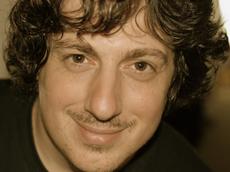Neanderthal Studies: And all by courtesy of science

Of all the questions one is asked most as a literary scholar at a technical university, the most troublesome one has to be the often somewhat scornful query as to whether one also shares in the immense progress of one’s colleagues. Usually, the question is aimed at the undoubted economic and cultural relevance of scientific and engineering research. Not infrequently, however, it implies that someone who essentially only writes books about books is not only difficult to justify economically, but also completely and utterly lacks a sense of the true needs of his fellow men.
Faced with such a question, one can always churn out plausible arguments and launch into a long eulogy about the holistic education of humans, or vindicate the importance of the cultural and historical anchoring of science. Surely there would be no harm either in pointing out the inherently fictional character of scientific theories with Russell or Feyerabend in the hope that the inquisitor is willing to surrender to the complexity of these remarks. More often than not, however, I find this requires too much effort. Consequently, I have started to steer gallantly clear of the quarrel between the faculties simply by appearing to be as knowledgeable as possible, either giving a kind of “best of” of my rudimentary knowledge about CERN or blindly referring to the latest articles from Nature (optionally from c’t), which I then make up off the top of my head. Also good practice!
But in all seriousness, I don’t want to be an ignoramus when it comes to lab research, and I really do cherish my secret passions, too. One of them is the still relatively young discipline of cryptozoology. What a wonderful world! All the creatures that were unlucky enough not to meet mankind or, indeed, be completely eaten up by him, are resurrected from their dry bones: a truly messianic and almost biblical scenario. One simply has to believe it! Even if one’s dismayed colleague, Marquardt, does always grumble, “What on earth is it this time?”, from the other side of the desk no sooner than the solemn voice of the narrator on the BBC documentary “Monsters We Met” has announced to me that the “Haast Eagle” (Harpagornis moorei), which died out 600 years ago, was not so much eaten by man as a man-eater itself.
My passion for cryptozoology can doubtlessly be put down to vague pangs of conscience about the animality of the planet on the one hand and, on the other, a yearning for biology as the humanistic subject it once was and which mostly used to be all about collecting and classifying exotic species. That glorious era is gone – but it, too, will soon return, like the mammoths, over whose second coming in Siberia there has already been intense speculation among the cryptozoologists.
It would be a sensational story, of course – but only at first glance. After all, what is a mammoth exactly? An elephant with hair. That is hardly going to change our view of the world now, is it? If you ask me, a report published in the New York Times last February about the imminent decoding of the Neanderthal genome seems far more exciting: if we are to believe George Church, a Neanderthal specialist from Harvard, we will soon be able to mass-produce Neanderthals (for 30 million dollars a pop).
Of course, rest assured that all the scientific ethicists who want to know what on earth we are supposed to do with Neanderthals in the 21st century won’t hesitate to put in their penny’s worth. The editor of the magazine Reason, Ronald Bailey, has a superb answer up his sleeve for the skeptics, which I would like to make my own: the Neanderthal is mysteriously supposed to have died out at precisely the same time as Homo sapiens was beginning to populate his territories. It thus looks as though our ancestors wiped out their unwanted relatives. Consequently, we have a moral responsibility, so to speak, to call the Neanderthals back into existence and make amends for the atrocity our species once committed.
To be honest, I couldn’t care less what the consequences of this project might be. Of course, many questions would need answering. The Neanderthals would need somewhere to live that corresponded to their needs for starters (my neighbor has already suggested Basle, but that’s another story). By all accounts, they already had their own rites and places of worship, which we would also have to accommodate. Moreover, the Neanderthals had already settled down while the likes of us were still nomads roaming around the Steppes. In times when flexibility is a valuable commodity, this would, of course, be a considerable disadvantage on the job market. Presumably, one would have to set up specific development programs geared towards the particular (primarily physical) strengths of the Neanderthals and the peculiarities of their culture.
However, I am eager for the project “Neanderthal 2010” to press ahead – for the simple reason that it is good material. As soon as we reach a world population of, say, two million Neanderthals, the humanities and social sciences would have enough research topics to last a hundred years. And I am not only talking about the obvious subjects, like “Neanderthal studies” (presumably launched in Berkeley). No, the academic program would contain so much more: the political organization of the Neanderthals, their relationship with concordance and their electoral behavior; the representation of Neanderthals in the media (“The Flintstones”, “Ice Age” etc.); the bear cult in light of secularization; an alternative theory of history (“pre-historicism”); cave semantics; the ethics of hunting (provided that the mammoth is already back by then, too) and so on and so forth.
And nobody, no one, will ever ask me what use my knowledge actually is again. It all begins next year!







READER COMMENTS